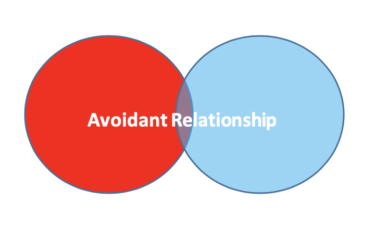Relationships are one of life’s most complex gifts. I think about the various relationships I have and I realize no two are identical. Each relationship I have, either with my parents, siblings, friends, coworkers, is unique. For example, I think about my two older siblings, I love them both equally, and yet how I interact with my brother and sister differ. The fact that we all have different personalities influences how we connect and relate with each other. Take a moment and think about the various relationships you have. Reflect on what makes each one unique or stand out. As you think about special people in your life, I hope you can think of times those relationships brought you joy, happiness, and fulfillment. I hope you can identify moments where you felt loved, supported, and treasured. Can it be that in those very same relationships, you might have felt hurt? How is it that in the very same relationships we can feel such opposite emotions? Since none of us is perfect, it’s normal to experience different emotions within the same relationships, however, there are times we might find ourselves in unhealthy relationships.
Relationships are all about the way we connect with others: emotionally, socially, and physically. Another word for this interpersonal connection is attachment. Attachment is something that has been studied and written about for many years.
Here is a very brief history lesson on the development of attachment theory from a research point-of-view. The psychologist and psychiatrist John Bowlby (1907-1990) is regarded as one of the most prominent figures to have studied and researched attachment. He worked closely with Mary Ainsworth (1913-1999). Together their research has led to a greater understanding of attachment. The main points of their research focused on the idea that attachment is something that begins to develop early in life between a child and his/her primary caregiver. It’s important to point out that relationships and the importance of connecting with others was written about back in Jesus’ day. Throughout the Bible, there are literally hundreds of verses that either directly or indirectly speak about attachment and the emotional connection with others. The value and importance of healthy relationships is not a new concept.
The Four Attachment Types
Let’s explore the four different attachment styles that have come out of John Bowlby and Mary Ainsworth’s work. Different professionals use slightly different names for these four styles, but the core ideas remain the same. It’s important to understand that attachment can be complex, and that one can have traits from more than one then one of these four types. An individual would have one of these 4 types as the predominant attachment style. Although these attachment styles develop in childhood, they play a vital role in our relationships as we get older.
Secure Attachment
Secure attachment is a healthy bond between the child and his/her primary care giver. The child experiences low anxiety and low avoidant behaviors. There are no fears of abandonment or getting too close to the care giver. In adulthood, there is low concern about rejection within the relationship. You have higher self-esteem within your relationship. You also feel comfortable to seek out social supports without fear and you can share your emotions with your partner.
Avoidant Attachment
A key aspect to avoidant attachment styles is the need for independence and self-sufficiency. In other words, the child does not feel comfortable with a close connection and learns to not rely on their primary care giver. There is low anxiety in this attachment style. The child does not express a lot of emotion within the relationship. In adulthood, you might struggle with intimacy within the relationship. You might not want to share your feelings and thoughts. You invest little in the relationship as the relationship progresses.
Anxious Attachment
A key aspect of anxious attachment involves fear. The child has a desire and need to want to bond with their primary caregiver, but there is fear of abandonment. There is often worry that the care giver will leave and not come back. In children this often results in meltdowns when separation occurs within a normal setting, such as being dropped off at school. In adulthood, you might struggle when your partner leaves for a work trip. A lack of communication or a delay responding to a call or text from you induces a high amount of anxiety and worry. When the partner returns you tend to desire extreme closeness to lower your anxiety and fear.
Disorganized Attachment
Out of all the attachment styles, disorganized attachment is the most rare and complex. More research is needed to gain greater understand of this specific attachment style. What we do know is that this tends to be a mix of both anxious and avoidant styles. Inconsistent behaviors from the child’s primary care giver leaves the child confused about whether they are wanted. This leads to the child having a poor ability to regulate their emotions. In adulthood, you struggle with understanding your partner’s level of commitment to you. Sometimes sex or violence is used to get a specific outcome within the relationship.
Healthy VS. Unhealthy Relationships
Graphics may help you visualize some aspects of what a healthy relationship looks like and what an unhealthy relationship might look like. How we learned to bond with our primary care giver has a significant impact of how we attach in friendships and romantic relationships as adults.
In a healthy, secure adult relationship, your identity does not become enmeshed with the other individual. As you grow closer to the other individual, your reliance and dependence on the other person grows. However, you maintain your own independence as well. The red and blue circle represent two people. As you are in a relationship with each other, the circles move closer together. In a secure relationship, the circles never completely overlap.
Below you can see two scales: Agency and Affiliation. Agency refers to the sense of control one has over their life. In a secure relationship, people have a greater sense of control in their life. This means that they understand and believe the choices they make can influence the direction of their life and they feel confident in making choice that affect their relationships. Affiliation refers to the sense of emotional connection with another. In a healthy secure relationship, people have a higher desire to connect with another. In both Agency and Affiliation healthy secure relationships avoid either extreme of the scale.
 The several diagrams show what unhealthy relationships might look like. The first picture shows a codependent relationship. In this relationship, your sense of identity is so enmeshed with the other individual, that functioning apart from them becomes almost impossible. As you can see, the red and blue circles are almost completely overlapped. Codependent relationships are difficult to maintain and there is often manipulation used to maintain the closeness. With codependent relationships, fear and judgment are common tactics used to prevent the other person from leaving.
The several diagrams show what unhealthy relationships might look like. The first picture shows a codependent relationship. In this relationship, your sense of identity is so enmeshed with the other individual, that functioning apart from them becomes almost impossible. As you can see, the red and blue circles are almost completely overlapped. Codependent relationships are difficult to maintain and there is often manipulation used to maintain the closeness. With codependent relationships, fear and judgment are common tactics used to prevent the other person from leaving.
 Now you can see the red and blue circles that are barely overlapping. This is what an avoidant relationship type might look like. There is almost no reliance on the other individual and there is little emotional investment in the relationship as the relationship progresses. Intimacy is low and conversations are often surface level and do not get emotional.
Now you can see the red and blue circles that are barely overlapping. This is what an avoidant relationship type might look like. There is almost no reliance on the other individual and there is little emotional investment in the relationship as the relationship progresses. Intimacy is low and conversations are often surface level and do not get emotional.
In a disorganized attachment relationship, the individual experiences both the codependent relationship and the avoidant relationship. They go from being really emmeshed with the other individual to feeling like they are not wanted or needed. Below you see the two scales from earlier. In an unhealthy relationship, especially codependent relationships, an individual might have an extremely low or high desire to connect with the other individual. Their sense of control in the relationship is either high or low.
Codependency Quiz
Here are some statements that might help you evaluate your relationships. These are simple YES or NO statements. If you are not sure how to answer, go with your first gut instinct and do not second guess yourself. These 10 statements are meant to help you explore your relationships and bring you some more understanding and clarity. After you finish the quiz and are concerned about the way you answered some of the questions, I encourage to talk to someone you trust. Do not forget we are here for you as well. Often, processing your emotions with a therapist can provide clarity and an objective point-of-view.
YES / NO – I cannot complete activities of daily living (hygiene, eating, sleeping, etc) without this person.
YES / NO – To go about my day, I need constant communication with this other person.
YES / NO – I do not know my identity apart from this other person.
YES / NO – Apart from this other person, I do not feel complete.
YES / NO – I greatly compromise my own wellbeing to meet the needs of this other person.
YES / NO – I feel constantly and regularly manipulated by the other person.
YES / NO – My emotional state is almost solely related/dependent on this other person.
YES / NO – I have given this other person money for their drug or alcohol use to make them happy.
YES / NO – I feel safe to talk and express my inner emotions without the fear of judgment.
YES / NO – I feel manipulated and powerless to leave the relationship if I want to.
There has been a lot of information in this article. Perhaps you see yourself in one of the examples. Remember: CHANGE IS ALWAYS POSSIBLE. If you recognize that one of your relationships is unhealthy or you realize you have some room to grow and learn, allow us to walk alongside you. Do not do it alone. You might have a tough journey ahead, but you do not have to walk alone.
“Relationships are all about the way we connect with others: emotionally, socially, and physically.”
By Alex Goreham, Licensed Clinical Social Worker
Recent Posts
Being Released from Overthinking – Part II
Please read Part I here. Today's work environment presents many with a constant barrage of potential anxieties. From deciphering [...]
5 Reasons to Join an Addiction Support Group
At Stenzel Clinical Services, we understand that recovery is not a solitary journey. Joining an addiction support group can [...]
Top 7 Self-Care Practices
In a world that continuously pulls us in multiple directions, self-care is extremely important. With thoughtful practices tailored to [...]






